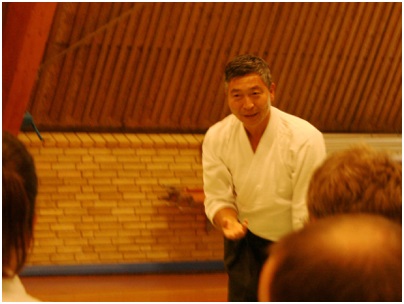 What is Aikido?
What is Aikido?
What is Aikido? If you’re looking for an effective way to learn a new skill, you should read this article. In this article, you will learn about the basics of aikido, including the techniques, strengths, and weaknesses, as well as its origins. Hopefully, you’ll be able to start practicing Aikido right away! Here are some tips to get started!
Techniques
Aikido techniques differ in their terminology and their application to different types of opponents. While Yoshinkan techniques are more focused on the feet, Aikikai techniques are a lighter touch. The information contained on these pages is not intended to replace the instruction of an instructor. Rather, it is meant to provide additional insight into the proper use of Aikido techniques. Learning how to apply a certain technique correctly will be an essential part of learning Aikido.
Aikido is a Japanese martial art that was developed by Morihei Ueshiba in the early 20th century. It is based on several traditional Japanese weapons and open hand arts, and aims to redirect potential destructive energy by combining the mind and body in movement. By learning the basic techniques of Aikido, you’ll be more prepared to defend yourself when the time comes. The techniques can help you to defend yourself in an unarmed fight.
Aikido techniques are based on the idea of using leverage, gravity, and inertia to bring down an attacker. This technique is highly effective at disarming an attacker and reversing their momentum and position. Aikido techniques also use centrifugal and centripetal force to subdue their attacker. Whether you’re a beginner or an experienced practitioner, Aikido techniques are suitable for anyone of any age.
In Aikido, there are two types of techniques: the uke and the nage. Both must learn how to react to an opponent’s attack and regain balance. The uke must also learn how to fall correctly in order to receive a devastating technique from the nage. After learning how to fall correctly, it’s easier to revert to a vertical position in the next phase. However, uke must remember that uke and nage are not the same.
Strengths
One of the greatest strengths of Aikido is its ability to integrate physical, mental, and spiritual elements. In fact, Aikido practitioners can completely immobilize their opponent with minimal effort. The art’s unique philosophy embodies these concepts. In other words, it teaches the use of balance, harmony, and integration in all aspects of one’s life. If you are considering a martial art, Aikido may be a good choice for you.
Another strength of Aikido is its stance. While Aikido practitioners step away from their opponents, they do not stand toe-to-toe with them. Instead, they use their hip power to parry punches and kicks, as well as Escrima. In addition, Aikido practitioners do not need to use a telegraph. While some critics may claim that Aikido is not effective in combat, that simply isn’t the case.
Technical skill is another strength of Aikido. It takes more time than other martial arts to learn some techniques. While an Escrima knife defense takes less than a year to learn to a practical level, Aikido students often take years to learn more complex techniques. However, it’s possible to master basic techniques in as little as one year. There are some advantages, however. Ultimately, Aikido is a martial art that can benefit anyone.
Despite its physical form, Aikido is an art that seeks to connect an individual to billions of years of creation. Its philosophy aligns with many of the values, beliefs, and behavioral tendencies of human beings. This is a strength of Aikido that makes it an appealing art for anyone to pursue. If you are serious about learning Aikido, you can begin by reading about its roots in human conflict.
Time To Mastery
While there are some strengths of Aikido, the practice does take time to master. Aikido relies heavily on technical skill and requires years of training to master. For example, a student can learn basic escrima knife defenses within a year, but the more advanced Aikido techniques take several years of practice. Although an Aikido practitioner can pull off basic knife defenses in less than a year, he or she will probably never be able to perform them with the same level of proficiency.
Aikido is that it is not particularly fast. It is incredibly difficult to execute certain techniques and requires an opponent to initiate the attack first. Because of this, Aikido practitioners must be very skilled in other martial arts and street fighting to be effective. Some of the training may be too watered down, and finding a proficient instructor can be difficult. While many Aikido practitioners will be able to beat a stronger opponent, this may not be the best strategy.
It has been noted that beginner Aikido practitioners may have difficulty defending against jabs and must maintain momentum in order to counterattack. This may be a real problem for beginners, as they don’t have the proper training in defending jabs. This can be a problem, because the average Aikido practitioner is worse than the average kickboxer with only a couple months of experience.
Aikido practitioners are generally older than most MMA competitors. So, while it might seem odd to compare a 45-year-old Aikido practitioner to a 25-year-old MMA competitor, the truth is that Aikido “ages well” compared to other forms of martial art. In other words, it attracts older martial artists. But that’s not to say that Aikido is perfect.
Origins
In 1919, Morihei Ueshiba first met Onisaburo Deguchi. Both men considered martial arts to be spiritual training. Aikido is more than a fighting art, it is a way to improve oneself through non-violent means and to conquer an opponent. During the Pacific War, Morihei sought to unite people in peace through a martial art.
O’Sensei was born in Wakayama Prefecture, Japan on December 14, 1883. During his childhood, he watched his father suffer from a beating by political rivals. After witnessing his father’s pain, O’Sensei began rigorous martial arts training. This training influenced him to blend aspects of several martial arts into his new style. His training also included teachings from the Omotokyo religion, which taught the importance of training the mind, body, and spirit.
Aikido consists of three main principles. The first aims to unite life energy with spirit. The second goal is to develop the body’s physical flexibility. During intense training, the body develops aerobic fitness. Stretching exercises and techniques develop the connective tissues. Relaxation is also a vital skill as these techniques cannot function without it. Finally, aikido teaches the balance between contractive and expansive power. Practicing aikido allows even the smallest person to generate enormous energy and defend themselves from an opponent.
In 1982, the Aikido section of the FFJDA went through a crisis. The two groups favored gradual separation from their judo-controlled mother organization. Another group led by Tamura urged immediate separation, and began preparing the structure of an independent organization. However, the move strengthened the opposition and Tamura’s group eventually resigned. At the following meeting in April 1982, the FNATK was officially recognized as an independent body, and he became president of the newly-formed FFAMT.
Origins of Ki Aikido
‘Ki’ is the Japanese word for energy. It is sometimes spelled as Qi. The focus of Ki Aikido is to cultivate the “ki” within yourself. This is accomplished through daily practice and philosophy. There are three definitions of ki: mental, physical, and spiritual. The following definitions are most commonly used today. These definitions may seem a little bit confusing.
The first definition of Aikido is “to harmonize with the ki of the universe.” This definition of ‘Ki’ has many variations, but its roots are in the ancient Japanese martial art. Tohei Sensei developed his own method based on his mentor’s ideas. The resulting style, known as Ki Aikido, is considered to be a hybrid of aikido and Japanese yoga.
The second definition explains that ‘ki’ is the natural energy that flows through all human bodies. Aikido practitioners practice a variety of techniques that redirect the momentum of an opponent. These techniques are usually terminated with a throw. Ki-Aikido is a blend of Aikido and mind-body coordination techniques. Ki-Aikido is an evolution of the Japanese art of Zazen, a practice that is thousands of years old.
In addition to the fundamentals of Aikido, the ‘way of Ki’ consists of a systematic method of developing Ki. This technique is known as ‘Shin Shin Toitsu Do’, and is the basis of the International Ki Society’s philosophy. It emphasizes the unification of mind and body. It is a spiritual training, a way to connect with the ‘ki’ and improve your own physical health.

